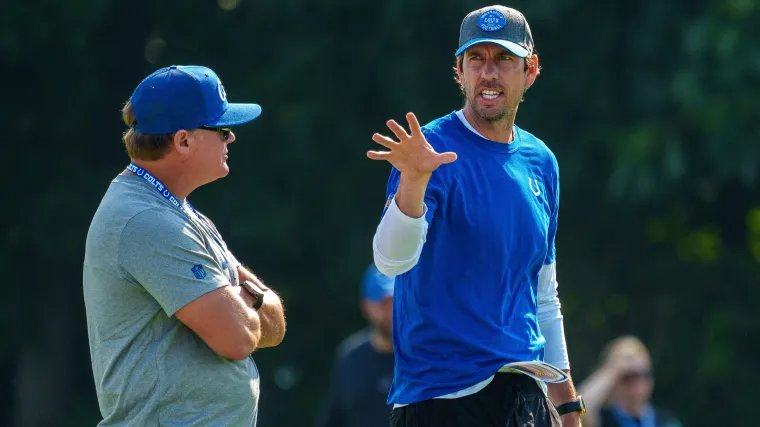Henry Pollock came off the bench for England as Steve Borthwick’s team unleashed their heavy artillery. Photograph: Simon King/ProSports/ShutterstockView image in fullscreenHenry Pollock came off the bench for England as Steve Borthwick’s team unleashed their heavy artillery.
Photograph: Simon King/ProSports/ShutterstockThe Breakdown newsletterRugby unionFixation on forward rotation threatens to turn rugby contests into war of attritionEvery team aspires to their own ‘Bomb Squad’ and the modern-day arms race is focused on unleashing heavyweight power from the benchRobert KitsonTue 4 Nov 2025 10.50 GMTLast modified on Tue 4 Nov 2025 11.43 GMTShareThere was a time in rugby union when the phrase “Bomb Squad” felt novel. South Africa were ahead of the game in maximising the impact of replacement forwards off the bench and the sight of all that fresh beef rumbling on to the field early in the second half was certainly arresting.
As the Springboks have proved repeatedly, it works a treat if you possess the requisite strength in depth.As with all good ideas, however, other people love to copy them. And so we have a modern-day arms race.
Everyone now has, or aspires to, their own Bomb Squad. Around the 45th-50th minute in virtually any game there will be an army of stunt doubles preparing to replace the players who started the game.
And if a coach can field fewer than three specialist backline reserves in order to bolster further his forward resources, happy days.Happy, that is, for those with enough quality artillery. Which, increasingly, includes England.
On Saturday against Australia it was Steve Borthwick who unleashed his heavy mob en masse, with five British & Irish Lions forwards rumbling on simultaneously. It worked a treat, the Wallabies ending up crushed beneath the caterpillar wheels of the home tanks.Henry Pollock can be spark England need but should rein in on-field antics | Robert KitsonRead moreThe same formula has been assisting the English champions Bath, who also stack their bench with the aim of flattening less powerful opponents late in games.
Under the regulations there is absolutely nothing wrong with that. Last year World Rugby did task a working group with looking into the whole subject – “to determine options that might create more space on the field while improving injury rates” – but, ultimately, that did not result in any suggested changes.Which may just turn out to be one of the bigger missed opportunities in the sport’s recent history.
Because anyone with a pair of eyes can see the way the actual product is going: a game tilting further towards power and further away from what was once the distinctive essence of the union code. A match used to revolve around wearing down the opposition to the point where their big men would feel they were running around in lead filled wellies.
At which point a little more space would open up and the sidestepping jinking wee guys could really have their fun.And now? It’s like watching a band featuring multiple drummers instead of one, with precious little in the way of guitar.
Get with the beat, lads. Of course, there cannot be a situation where injured players are effectively forced to stay on the field but, equally, insufficient attention is being paid to the knock-on effect of endless subs.
In particular, it favours nations with the deepest resources – and playing numbers – and counts against smaller countries who cannot compete in terms of bench horsepower.View image in fullscreenSouth Africa were ahead of the game in terms of maximising strength from the bench. Photograph: Tom Jenkins/The GuardianSome will say that has always been the case.
Tests between New Zealand and Australia, interestingly, involved replacements for injured players as far back as 1907, with an intriguing tweak in 1947 when it was declared that injury-enforced changes could be made only before half‑time, perhaps to discourage possible rule‑bending. The International Rugby Board did not sanction replacements globally until 1968, however, and the first example in England only occurred in 1969 when Keith Fielding’s twisted ankle and Tim Dalton’s subsequent arrival against Scotland created a minor footnote in Twickenham history.The first English blood replacement, incidentally, was in 1995 when Dewi Morris replaced Kyran Bracken, with tactical replacements not officially deemed legal by the IRB until 1996.
England employed three tactical subs in their next Test against Italy that November and have never looked back.These days any coach worth his or her organic salt builds their entire strategy around a concerted second-half gear change, preferably with multiple new faces arriving at the same time. “Clearly if you change en masse, it’s much more straightforward because you can train that combination together,” says Borthwick, fond of talking about “Q4” as the key quarter of most games.South Africa do not quite have the same range of heavy hitters to match the original Bomb Squad that helped to deliver the 2019 World Cup but their mega game against France in Paris this weekend will also be shaped by the power battle in the last half- hour.
It is not always possible to replicate the colossal “Nuke Squad” impact of the Boks’ 7-1 bench split against New Zealand at Twickenham in August 2023 but everyone now fancies having that luxury.Until, that is, someone, somewhere decides that enough is enough. Seasoned rugby figures such as Sir Bill Beaumont, Eddie Jones and Wayne Smith have all sounded the alarm in recent years without swaying the majority view.
But what if, from 1 January, international teams could use only six of their designated eight matchday subs and three of those eight had to be specialist backs? At a stroke you would reduce the “Monster Truck” quotient, potentially level the playing field for smaller nations and maybe encourage a little more space for creative types.View image in fullscreenBen Earl is an example of the modern-day hybrid player in the sport.
Photograph: Simon West/Action Plus/ShutterstockWill it ever happen? Don’t hold your breath.
Any injury risks attached to big fresh players encountering tired bodies late in games have to be balanced against the likely shift in coach and player behaviour should the number of replacements be reduced. Players staying on longer might result in a greater chance of injury.
And what is a “back” these days anyway, with hybrids such as Ben Earl, Henry Pollock and Kwagga Smith capable of filling multiple roles? Beyond the whole Bomb Squad concept, however, is a bigger picture that cannot be blithely ignored.
This is an extract taken from our weekly rugby union email, the Breakdown. To sign up, just visit this page and follow the instructions.
Explore more on these topicsRugby unionThe Breakdown newsletterEngland rugby union teamSouth Africa rugby teamfeaturesShareReuse this content
Source: The Guardian Sport
Read the full article at: The Guardian Sport














Leave a Reply